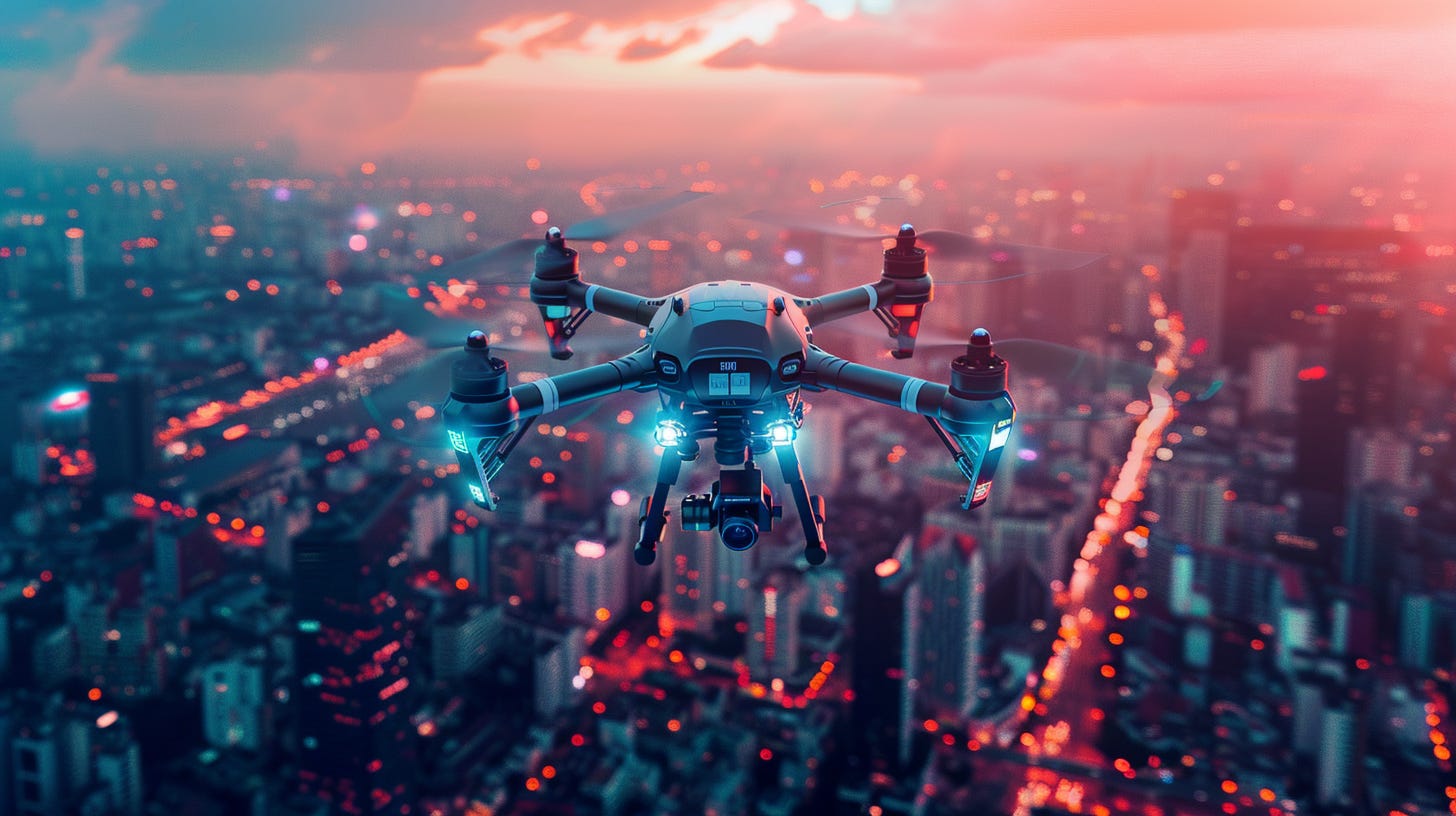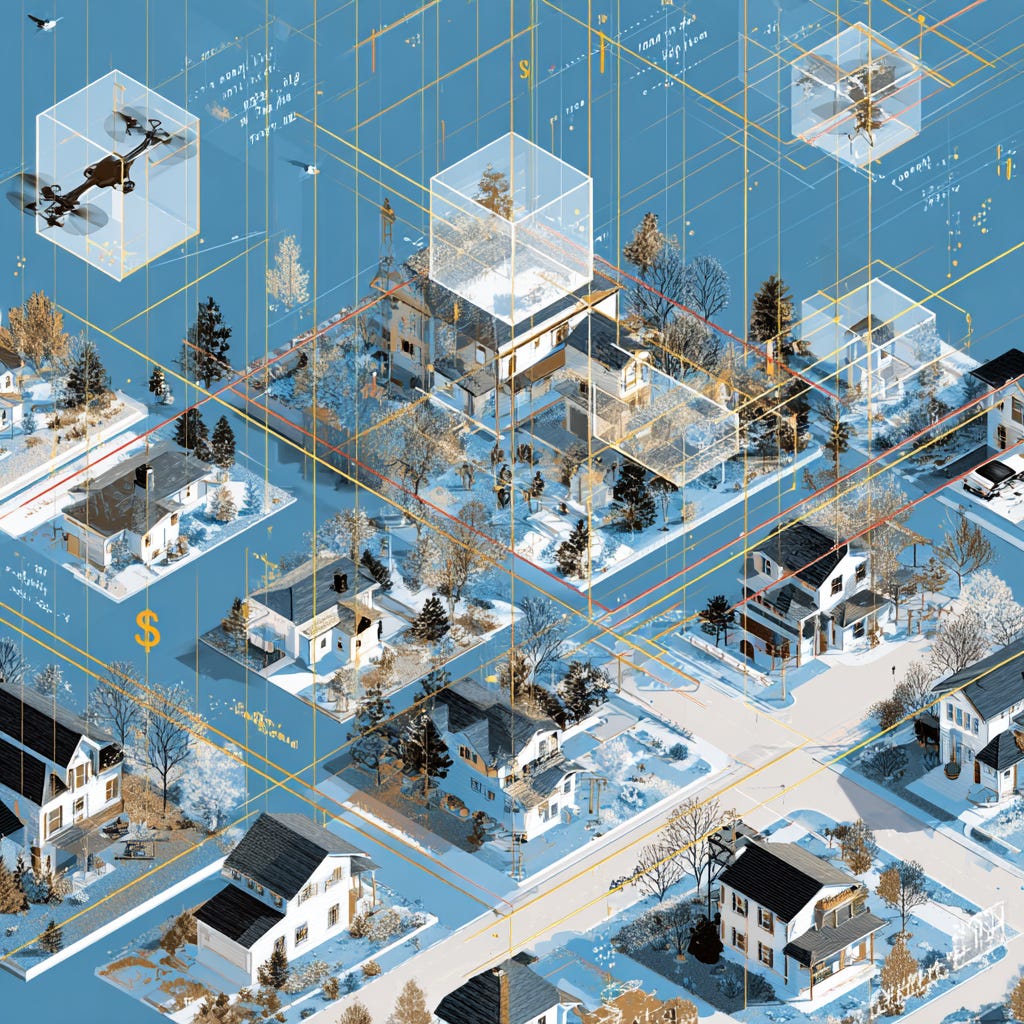No Single Tower Shall Rule Them All - Close the Backdoors, Open the Market
Trusted hardware and permissioned low‑altitude airspace protects property, aligns regulators and operators.
America’s skies are getting a firmware update. The FCC’s latest move isn’t protectionism, it’s protocol hardening. They are closing exploits before they’re weaponized. Drones, radios, and radars aren’t toys anymore; they’re infrastructure. And infrastructure can’t run on untrusted code or foreign control. The message to DJI and its promoters is simple: resilience beats dependence. Security isn’t a brake on innovation; it is the architecture that makes it possible.
Promoters of DJI are worried. Infrastructure must be resilient and not dominated by any one vendor, stack, or country. Hardware, including tracking nodes and radar, is the same. No single point of failure if success is the goal.
In a unanimous 3–0 vote, the FCC just tightened its rules to close loopholes in its Covered List framework, the list for gear deemed an “unacceptable” national‑security risk. Until now, bans have hit only “new” devices from names like Huawei and Hikvision.
“The Commission’s rules directs the Public Safety and Homeland Security Bureau to publish a list of communications equipment and services (Covered List) that are deemed to pose an unacceptable risk to the national security of the United States or the security and safety of United States persons.” FCC Covered List
This change goes further, as it allows the FCC to reach back to previously authorized devices and block suspect radio components in otherwise approved products. This means if a company is judged a risk, the FCC can shut the door even on older approvals.
There are other implications for promoters of DJI drones and components in the US, too, including commercial UAV operators who’ve standardized on Chinese airframes and parts.
It’s a proactive shield, ensuring that no corner of the US communications infrastructure remains vulnerable to foreign exploitation. The move signals a maturing ecosystem where security is the bedrock of innovation.
At its core, these enhancements are a net positive for the drone sector and beyond, injecting urgency into the race for resilient, homegrown alternatives. With Chinese manufacturers like DJI commanding an overwhelming 70-80% of the U.S. market, lawmakers have long fretted over this dominance. It is not just an economic imbalance, but also a strategic chokepoint that could throttle American ingenuity at a moment’s notice.
DJI’s grip, while delivering affordable, high-performance tools that have revolutionized fields from agriculture to emergency response, fosters an unhealthy dependency on overseas supply chains prone to geopolitical whims. By leveling the playing field, the FCC’s action catalyzes investment in U.S.-led solutions, from emerging startups advancing battery tech and AI navigation to drone infrastructure and the utilization of air rights.
“With today’s action, the FCC clarifies and strengthens its existing prohibitions on covered equipment while also addressing ways to further strengthen the security of our supply chain through controls on importation and marketing.” – FCC Statement, October 28, 2025
It gives regulators a lever to retroactively bar parts and RF components that once sailed through certification. If companies are sourcing vehicles or spares with Chinese guts, this could reshape procurement overnight.
The 2025 National Defense Authorization Act ordered a review of Chinese drones to decide whether a broader ban is warranted. There’s a firm date attached, which is December 23, 2025. If that audit isn’t finished on time, DJI lands on the Covered List by default, a step that could make operating DJI drones in the U.S. effectively impossible going forward.
The Response
DJI has noted that it is not currently on the Covered List, so the FCC’s latest change doesn’t affect it today. They’re urging the government to start the mandated review, or extend the deadline to ensure a “fair, evidence‑based” process. Lobbyists, overt and covert, are doing the same for them.
Meanwhile, DJI parts are widely used in U.S. commercial operations across photo and film, construction, public safety, and law enforcement. Data storage is filled with information that spans a photo or video of your backyard to traffic issues and violent disturbances, which is precisely why this moment is tense.
The overarching point is that we cannot let one actor - or its affiliates - control the air, and private property rights in the US help make this resiliency a reality, not just a dream.
Moving Policy Makers
This is not new; it is the direction of travel, and anyone pushing for DJI dominance will be left behind, it seems. Florida law enforcement has already implemented a ban on DJI drones for official use. In March 2024, DeSantis signed Senate Bill 88 (SB 88) into law, which prohibits state and local government agencies, including law enforcement, from purchasing, contracting for, or using unmanned aircraft systems (drones) manufactured by entities based in “foreign countries of concern” (such as China, where DJI is headquartered). The restrictions took effect on July 1, 2024, and apply to all new acquisitions, with existing DJI drones required to be phased out by July 1, 2025.
Concerns about data security risks and potential ties to the Chinese Communist Party for espionage drove the measure. Florida agencies, including the Florida Highway Patrol and local sheriff’s offices, have since shifted to U.S.-made alternatives. Non-compliance could result in funding penalties, and the state has allocated resources to support the transition.
Foundational Rights: Property rights - air rights - matter
The less we can trust the gear, the higher the intrusion risk rises. A drone that can stream back to a foreign server, or be remotely commandeered, isn’t just a nuisance; it’s an invasion of your air, your privacy, and your property. So an invasion of US national airspace and an invasion of private airspace all lead to a very concerning place. If property rights do not vest in the individual in the jurisdiction, then it doesn't matter; but in the US and most other free nations, they do, and that needs to be protected and guarded jealously.
When you tie these threads together, you see the structure emerging. Operators must obtain permission for flights that transit into private airspace. Drones must use equipment that is trusted, authorized, and compliant to reduce the risk of abuse. Regulators must ensure rules align not just with airspace safety but with private rights; the right of landowners to control what happens above their property.
By restricting specific equipment, the federal system establishes a baseline trust standard for operations that cities and states can adopt. That baseline supports private property rights: if the equipment is dodgy, the flight is suspect; if the equipment is legit and the operator seeks permission, then rights are respected.
Policy and Property Owners
If you’re a property owner, you want a clear path to deny, allow, or condition drone flights in your property. Drone operators and service providers need consent for their operations and low-altitude flights over property. Operators must ensure that their hardware and software are compliant and safe. Regulators and city planners treat low-altitude airspace as shared between public and private use, with air rights as the backbone of this.
The Skies Parted
The drone revolution isn’t just about flying cameras and delivery bots. It’s about who controls the air, who has rights there, and how we protect those rights. The FCC’s gear-ban agenda is not merely a trade or security fight; it is a proxy for a deeper principle: if the gear can’t be trusted, its existence is at risk; everyone’s air rights are at risk.
If we ignore this, we end up in a world where aerial intrusion is a high cost to the owner, anonymous, and unaccountable. When we couple trusted hardware, regulatory clarity, and private-airspace consent, we build a drone ecosystem that respects individual property rights while driving innovation.






